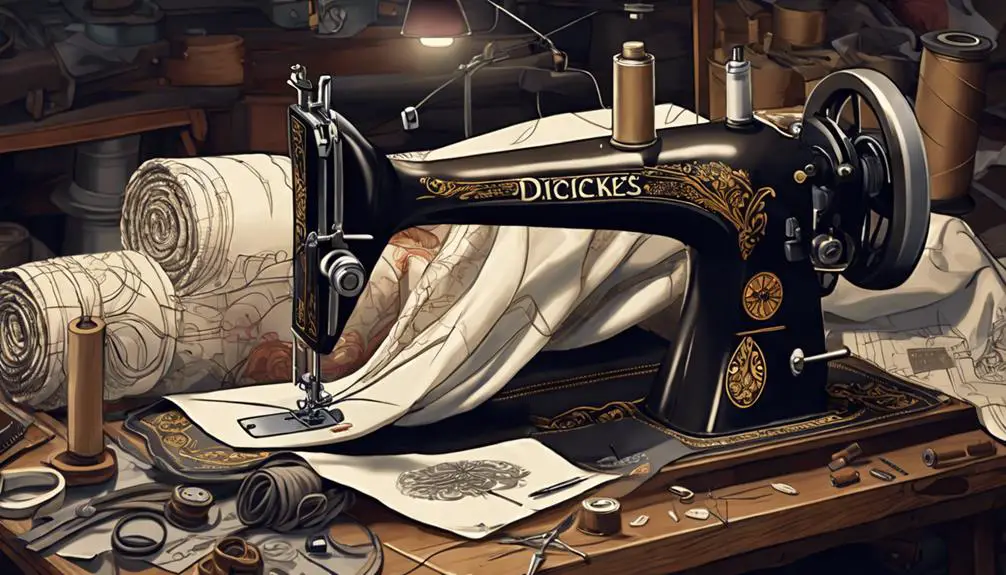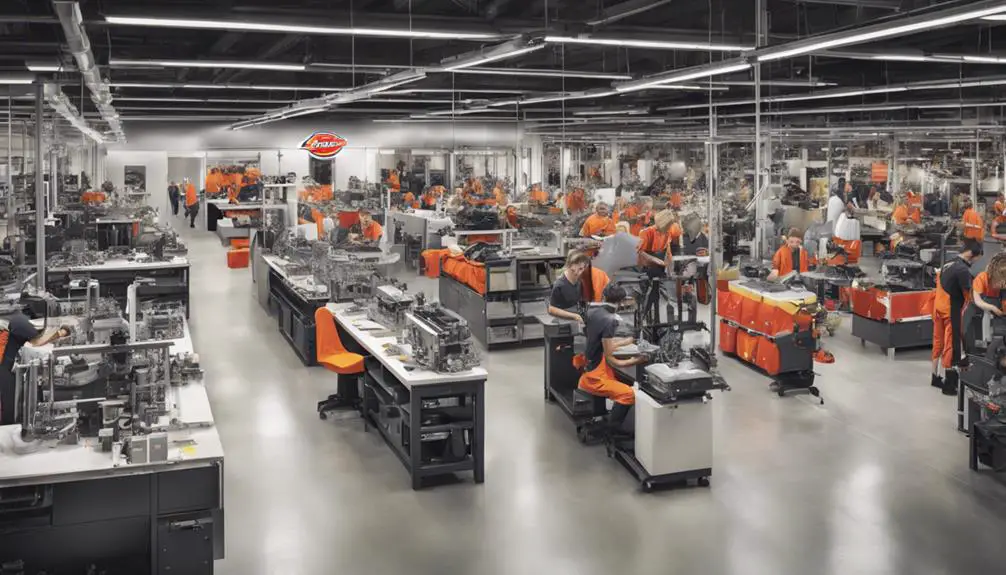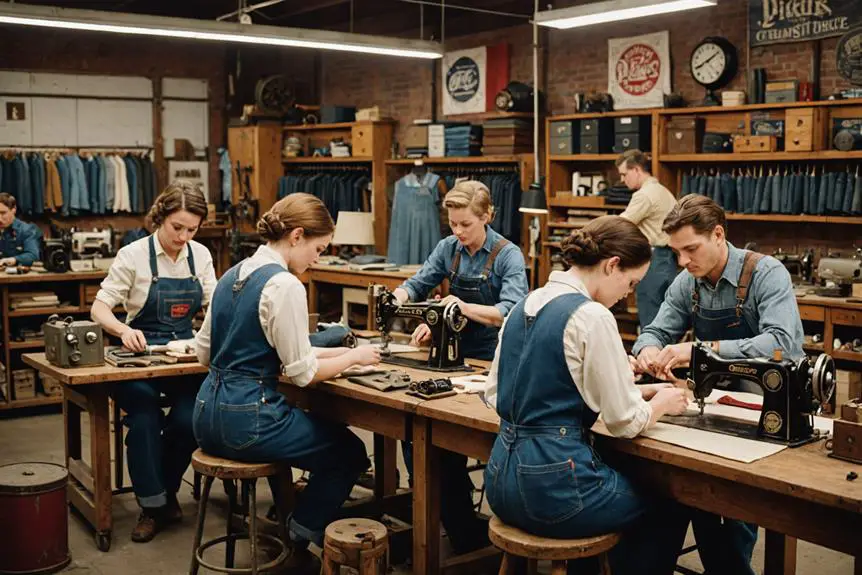When you think about Dickies, it's hard to imagine that it all started back in 1922 in Fort Worth, Texas. Founded by C.N. Williamson and E.E. Colonel Dickie, the company initially focused on horse gear before making a significant shift to workwear. As you explore the journey of this brand, you'll uncover how it transformed during tough economic times and became a staple for blue-collar workers. What drove this evolution, and how did the iconic products emerge? The answers might surprise you.
Founding Years

Dickies kicked off its journey in 1922 in Fort Worth, Texas, when C.N. Williamson and E.E. Colonel Dickie decided to revolutionize workwear. Originally founded as U.S. Overall Company in 1918, the company initially focused on producing horse equipment and harnesses.
However, as they recognized the needs of laborers, they pivoted to manufacture durable workwear, specifically denim bib overalls, which quickly became a staple for ranchers and farmhands in the Southwest. This shift also laid the groundwork for future innovations in workwear, such as the introduction of the 874® twill work pant, which would later become a bestseller and a market staple an enduring legacy of quality.
After acquiring the Overall Company, they rebranded as Williamson-Dickie Manufacturing Company, a name that would become synonymous with quality and reliability.
With the Great Depression looming, many businesses struggled, yet Dickies managed to expand its workforce and product offerings. This bold move not only demonstrated their commitment to workers but also solidified their reputation in the industry.
The durable workwear produced by Dickies was designed to withstand the rigors of daily labor, making it a favorite among those who needed functional clothing. By focusing on quality materials and craftsmanship, they guaranteed that each piece of clothing could endure tough conditions, allowing workers to feel confident in their attire.
As you explore the history of Dickies, you'll discover a tale of innovation and resilience, showcasing how a small company in Fort Worth, Texas, became a leader in the workwear industry. Their journey reflects a dedication to meeting the needs of hardworking individuals, a legacy that continues to this day.
Growth During Challenges
As the company carved out its place in the workwear market, it faced significant challenges, especially during the Great Depression. Despite these tough times, Dickies found ways to thrive, showcasing its resilience and innovative spirit.
Here are four key strategies that fueled its growth:
- Expanding Offerings: Dickies broadened its workwear range, catering to a diverse clientele while ensuring affordability and durability.
- Supporting Workers: By providing free meals to workers, the company built a strong rapport with its community, reinforcing its reputation as a reliable brand during economic hardships.
- Military Contributions: During World War II, Dickies stepped up, producing around nine million uniforms for the U.S. armed forces, which elevated its visibility and solidified its status in the industry.
- Targeting Families: Throughout the 1930s and 1940s, the company strategically targeted All-American families, maintaining steady growth even as economic challenges loomed.
This dedication to ruggedness and reliability helped Dickies not only survive but flourish during challenging periods.
By focusing on quality workwear and adapting to the needs of its customers, Dickies established a reputation that would carry it through the decades. The company's commitment to producing uniforms that stand the test of time allowed it to navigate economic storms while remaining a trusted choice for hardworking individuals.
Iconic Products
The legacy of Dickies is defined by its iconic products, which have set the standard for workwear innovation. One of the standout items in their lineup is the 874® twill work pant, introduced in 1967. This pant quickly became Dickies' best-selling product, thanks to its durable blend of 65% polyester and 35% cotton, offering unmatched longevity and practicality across various work environments.
Whether you're in automotive, construction, or healthcare, you can rely on these pants to get the job done.
Dickies has continually adapted its designs to meet the functional needs of diverse industries, ensuring that their workwear remains relevant and effective. But the brand doesn't stop there; they've expanded their product offerings to include stylish streetwear options, appealing to a broader customer base.
This blend of functionality and fashion demonstrates their commitment to innovation while maintaining affordability, making Dickies a go-to choice for many.
The focus on durability is evident in every piece they create, whether it's classic workwear or trendy street styles. These iconic products aren't just about looking good; they're built to withstand the rigors of everyday wear, all while providing the comfort and functionality you need.
Cultural Impact
From the streets of Southern California to skate parks around the world, Dickies has carved out a unique space in the cultural landscape. As a workwear manufacturer, the brand transcended its origins, becoming a symbol of rugged style embraced by various cultural movements.
Here are four key ways Dickies has made its mark:
- Streetwear Influence: In the late 1980s, Dickies emerged as a staple in the streetwear scene, particularly within hip-hop culture, where oversized styles became a trend.
- Skateboarding Culture: By the 1990s, skaters gravitated towards Dickies for their durability, making them a must-have for anyone who values both style and function.
- Collaborations: The brand's partnerships with artists and other brands helped solidify its presence in diverse cultural movements while remaining true to its workwear roots.
- American Culture: Dickies isn't just about fashion; it holds a special place in American culture, famously supplying oversized clothing for Big Tex, the Texas State Fair mascot, and even securing naming rights to Dickies Arena in Fort Worth, Texas.
Through these avenues, Dickies has left an indelible cultural impact, blending functionality with fashion and connecting with communities around the globe.
Whether you're rocking them at a skate park or attending a hip-hop concert, Dickies remains a reflection of the intertwining of rugged style and contemporary culture.
Recent Developments

Dickies has been making waves in recent years, reflecting its commitment to innovation and community engagement. Since being acquired by VF Corporation in 2017 for $820 million, Dickies has joined a prestigious portfolio that includes renowned brands like Vans and The North Face. This partnership hasn't only boosted the brand's visibility but also enhanced its ability to innovate in product design.
The brand's evolution mirrors that of other iconic labels, such as Alpha Industries, which has maintained relevance through military-inspired fashion and strategic branding initiatives, showcasing the importance of brand evolution in fashion.
In 2022, Dickies celebrated its 100th anniversary, a remarkable milestone showcasing a century of providing innovative workwear that meets the demands of diverse professions. The brand's adaptability in fashion was further highlighted in June 2020, when Dickies collaborated with the Japanese brand FACETASM to create a unique capsule collection, blending functionality with contemporary style.
Dickies remains deeply committed to sustainability and community engagement, responding dynamically to global events like COVID-19. By adapting its marketing strategies and focusing on eco-friendly practices, the brand aims to resonate with socially conscious consumers.
Furthermore, its dedication to innovative workwear guarantees that Dickies continues to offer products that cater to the evolving needs of modern work environments.
As you explore Dickies' recent developments, it's clear that the brand isn't just about clothing; it's about creating a lasting impact. With a focus on sustainability, fashion-forward designs, and a strong community connection, Dickies stands poised to lead the way in the workwear industry for years to come.




